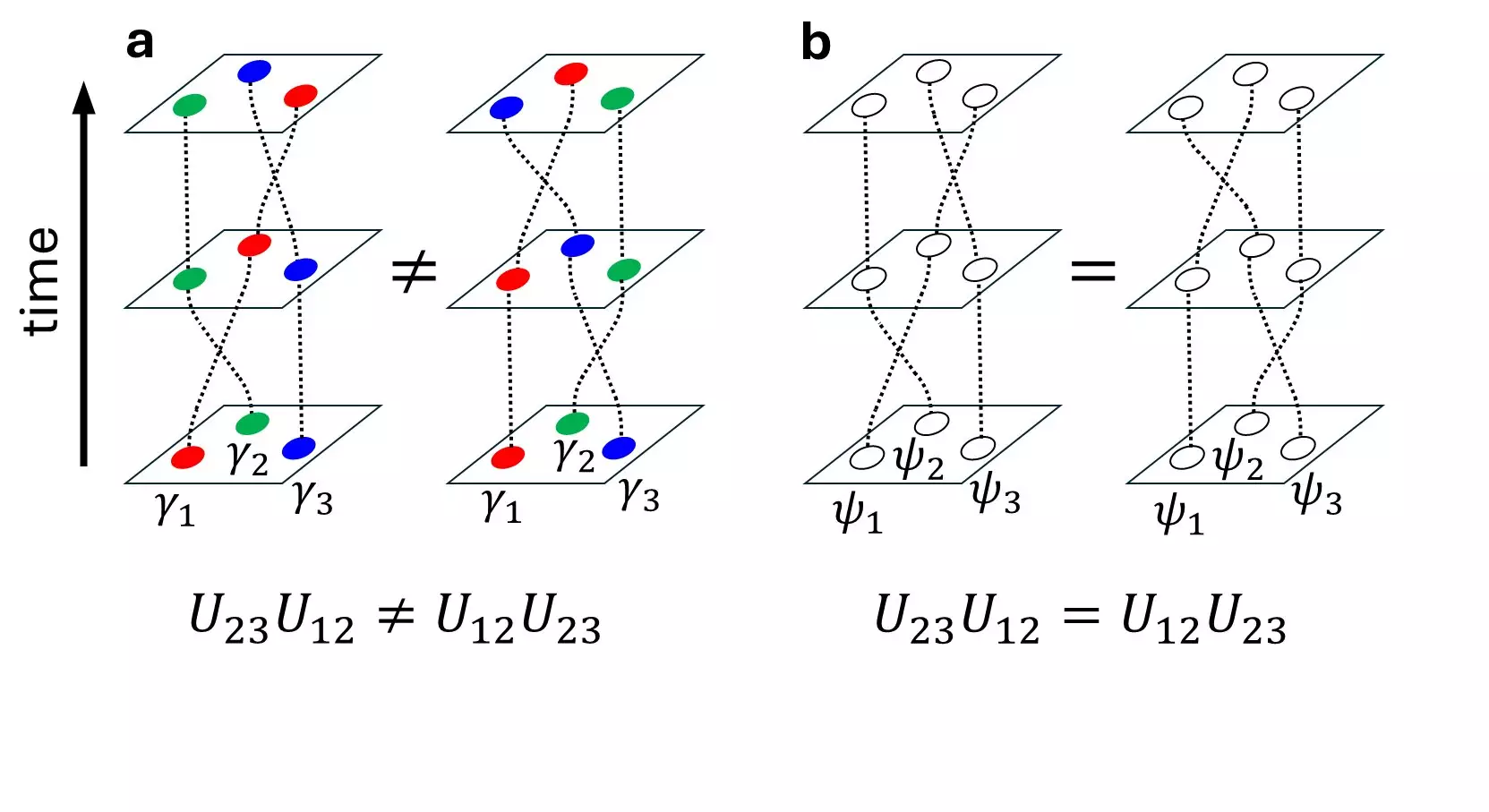In the quest for revolutionary advancements in quantum computing, researchers have made a monumental breakthrough with the identification of multiple Majorana zero modes (MZMs) within a single vortex of the superconducting topological crystalline insulator SnTe. This pivotal research, detailed in a recent publication in Nature, represents a significant step towards the realization of fault-tolerant quantum computers. The collaborative effort was spearheaded by a distinguished team led by Prof. Junwei Liu from the Hong Kong University of Science and Technology (HKUST), along with notable contributions from Profs. Jinfeng Jia and Yaoyi Li at Shanghai Jiao Tong University (SJTU).
Majorana zero modes are unique quasiparticles that exist at the boundary of superconductors and exhibit zero energy. They are celebrated for their non-Abelian statistics, a characteristic that distinguishes them from ordinary particles such as electrons or photons. While the latter exhibit predictable outcomes regardless of the sequences in which they are exchanged, MZMs permit varied outcomes based on their braiding sequences, paving the way for potential applications in robust quantum computation. This capability protects MZMs from local disturbances, making them prime candidates for stable qubit implementations.
Despite the recognition of MZMs’ potential, engineering them within artificial topological superconductors has presented challenges, especially concerning their spatial separation, which complicates manipulation and hybridization efforts. The novelty of this recent work lies in the research team’s innovative approach to address these obstacles by leveraging the crystal symmetry inherent in SnTe.
The researchers employed a groundbreaking methodology focused on the unique features of crystal-symmetry-protected MZMs. This strategy allowed them to bypass significant barriers traditionally encountered in the manipulation of MZMs, such as the need for real-space movements or application of intense magnetic fields. This novel approach facilitated the discovery and hybridization of multiple MZMs within a single vortex of SnTe, a feat previously unattainable.
Utilizing a combination of sophisticated experimental techniques and theoretical simulations, the team meticulously demonstrated the existence of these MZMs. The experimental undertakings, conducted by the SJTU group, included monitoring the response of the SnTe/Pb heterostructure under varied magnetic fields. Remarkably, they detected significant alterations in the zero-bias peak, a critical indicator hinting at the presence of MZMs.
In parallel, the theoretical researchers at HKUST executed extensive numerical simulations to affirm the substantial claims made through experimental evidence. Through the use of the kernel polynomial method, they meticulously modeled large vortex systems, encompassing hundreds of millions of orbitals. These simulations confirmed that the anisotropic responses observed were fundamentally rooted in the crystal-symmetry-protected nature of the MZMs.
This synergistic collaboration between theory and experimental practice marks a transformative moment in the trajectory of quantum research, promising enhanced strategies for the detection and manipulation of MZMs. The implications of such discoveries are vast, providing a glimpse into future innovations in quantum technology.
The ramifications of these ambitious findings extend profoundly into the realm of quantum computing. By enabling the experimental validation of non-Abelian statistics and the formation of novel topological qubits, researchers can potentially realize new types of quantum gates based on MZMs. Such advancements could lead to increased stability and fault tolerance in quantum systems, propelling quantum computers beyond their current limitations.
Furthermore, as researchers continue to explore these novel crystal-symmetry-protected MZMs, new properties and applications within vortex systems are bound to emerge. This ongoing exploration introduces a rich field of research that could redefine our understanding of topological materials and their practical utility in cutting-edge technology.
In summation, the identification of multiple Majorana zero modes within the superconducting topological crystalline insulator SnTe represents a landmark moment in quantum research. Through the inventive use of crystal symmetry and the collaboration of experts across disciplines, this discovery lays a solid foundation for advancements in fault-tolerant quantum computing. As research continues to evolve, the full potential of MZMs in revolutionizing our technological landscape remains an exciting frontier.


Leave a Reply